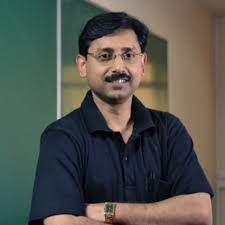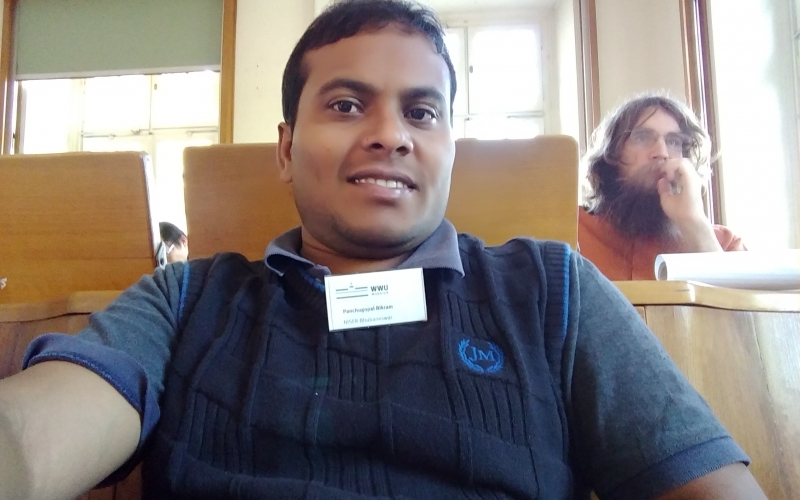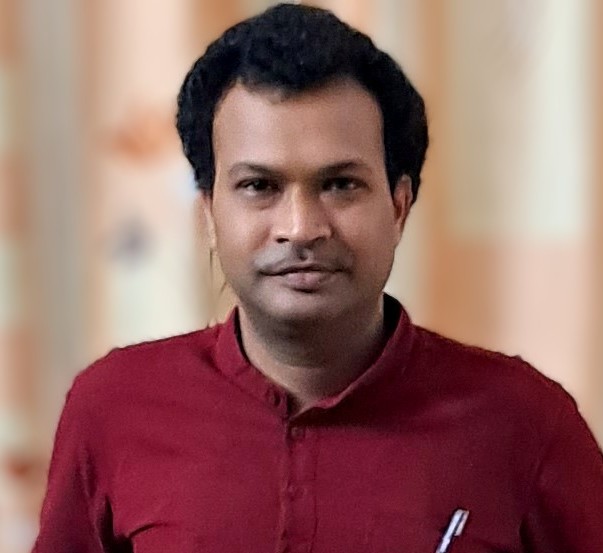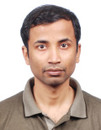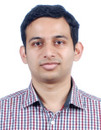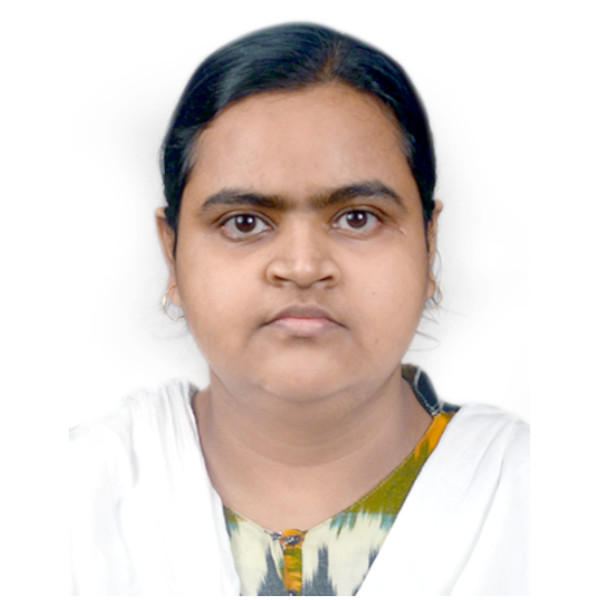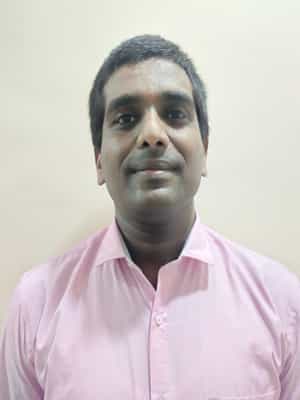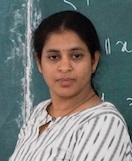Local mapping property of the Schrödinger maximal function
Speaker: Prof. Swagato Kumar Ray
In this talk we will describe the local mapping property of the Schrödinger maximal function for Riemannian symmetric spaces of noncompact type with real rank 1. This is a joint work with Utsav Dewan.
Non commutative ergodic theorem associated to free group actions
Speaker: Prof. Panchugopal Bikram
In this talk we discuss ergodic theory related to free group actions on both classical and quantum setting.
Asymptotic behavior of blowing-up and global solutions for quasilinear elliptic systems with gradient terms
Speaker: Prof. Jacques Giacomoni
We deal with the following quasilinear elliptic system involving gradient terms in the form:
\[
\begin{cases}
\Delta_p u = v^m|\nabla u|^\alpha \text{ in } \Omega \\
\Delta_p v = v^\beta|\nabla u|^q \text{ in } \Omega
\end{cases}
\]
where \(\Omega \subset \mathbb{R}^N\) (\(N \geq 2\)) is either equal to \(\mathbb{R}^N\) or equal to a ball \(B_R\) centered at the origin and having radius \(R > 0\), \(1 < p < \infty\), \(m, q > 0\), \(\alpha \geq 0\), \(0 \leq \beta \leq m\) and \(\delta := (p - 1 - \alpha)(p - 1 - \beta) - qm \neq 0\).
Our aim is to establish the asymptotics of the:
1) global radial solutions (so behaviour at infinity)
2) blowing-up radial solutions (so profile of the blow up)
For that we use the theory of dynamical cooperative systems. Uniqueness results follow for both types of solutions from the proved accurate asymptotics and a hidden maximum principle.
Shortest lattice points in a totally real multiquadratic number field and applications
Speaker: Dr. Jishu Das
Let F be a multi-quadratic totally real number field. Let σ₁, ..., σᵣ denote its distinct embeddings. Let M be a fractional ideal in F and min(M) := min(||σ(s)||: s ∈ M, s ≠ 0), where ||σ(s)|| = √∑ᵢ(σᵢ(s))². The set of shortest nonzero lattice points for M is given by s ∈ M: ||σ(s)|| = min(M). We provide shortest nonzero lattice points for M in terms of rational solutions to a given Diophantine equation.
As an application, we get a refined asymptotic for the Petersson trace formula for the space of Hilbert cusp forms. We then use the refined asymptotic to obtain a lower bound analogue to a theorem by Jung and Sardari for classical cusp forms.
Ring of invariants
Speaker: Prof. Tony Joseph Puthenpurakal
I will discuss finite subgroups G of \(GL_n(k)\) and discuss the invariant rings of G acting on \(k[X_1, ...., X_n]\).
On the bilinear Bochner-Riesz problem
Speaker: Prof. Saurabh Shrivastava
In this talk, we will discuss some of the recent developments on the problem of Bilinear Bochner-Riesz means in harmonic analysis.
Canonical forms of holomorphic and meromorphic matrix-valued functions
Speaker: Prof. Rafikul Alam
Canonical forms are powerful tools for spectral analysis of matrices. The Smith form of a matrix polynomial and the Smith-McMillan form of a rational matrix are well known canonical forms which are used extensively in theory and applications. Although, local canonical forms such as local Smith forms of holomorphic and meromorphic matrix-valued functions are well known in the literature, there has been relatively little research on global canonical forms of holomorphic and meromorphic matrix-valued functions. We present, among other things, the global Smith form (resp., global Smith-McMillan form) of a holomorphic (resp., meromorphic) matrix-valued function which is akin to the Smith form (resp., Smith-McMillan form) of a matrix polynomial (resp., rational matrix).
Mixed-precision subspace iteration algorithm for nonlinear generalized eigenvalue problems towards quantum-modelling of materials in the exascale era
Speaker: Prof. Phani Motamarri
Quantum mechanical modeling of materials have played a significant role in determining a wide variety of material properties. In particular, Kohn-Sham density functional theory (DFT) calculations involving the solution of a non-linear eigenvalue problem, have been instrumental in providing many crucial insights into materials behavior, and occupy a sizable fraction of world's computational resources today. However, the stringent accuracy requirements required to compute meaningful material properties, in conjunction with the asymptotic cubic-scaling computational complexity of the underlying nonlinear eigenvalue problem, demand huge computational resources for accurate DFT calculations. Thus, these calculations are routinely limited to material systems with at most few thousands of electrons.
In this talk, I will present our group's very recent work on developing a local real-space formulation of density functional theory within the projector augmented wave (PAW) method that is amenable to finite-element (FE) discretization. Hardware-aware scalable computational methodologies relying on Chebyshev filtered subspace iteration procedure for solving the underlying FE discretized nonlinear PAW generalized eigenvalue problem will be discussed, along with accuracy and performance benchmarks on representative material systems.
Scale-Dependent Poincaré inequalities and the stability of the Heisenberg Uncertainty Principle on the hyperbolic space
Speaker: Prof. Debdip Ganguly
We establish a general scale-dependent Poincaré-Hardy type identity involving a vector field on the hyperbolic space. By choosing suitable parameter, potential and vector field in this identity, we can recover, as well as derive new versions of several Poincaré type, Hardy type and Poincaré-Hardy type inequalities in the literature. We also investigate weighted Poincaré inequalities on hyperbolic space, where the weight functions depend on a scaling parameter. This leads to a new family of scale-dependent Poincaré inequalities with Gaussian type measure on the hyperbolic space which is of independent interest. As a result, we derive both scale-dependent and scale-invariant L2-stability results for the Heisenberg uncertainty principle in this setting.
On congruent isomorphisms for tori
Speaker: Prof. Sandeep Varma
Nonarchimedean local fields F, F' are said to be l-close if \(O_F/p_F^l \cong O_{F'}/p_{F'}^l\), where \(O_F\) is the ring of integers of F, and \(p_F\) its maximal ideal. Given such F and F', one can talk of what it means for a torus T over F and a torus T' over F' to be l-close. Given such tori, Radhika Ganapathy has proved isomorphisms between their quotients, that take the form \(T(F)/T(F)_n \cong T'(F')/T'(F')_n\) for suitable integers n, as a special case of her more general work on reductive groups, generalizing Kazhdan's work on split reductive groups. We prove the functoriality as well as the compatibilities with the Kottwitz homomorphism and the local Langlands correspondence for analogous isomorphisms of tori that we construct. This is joint work with Anne-Marie Aubert.
Convergence of Adaptive Finite Element Methods for Optimal Control Problems Involving Dirac Measures
Speaker: Mr. Subham Nayak
This talk focuses on the quasi-optimality of adaptive nonconforming finite element methods for optimal control problems governed by biharmonic equations involving Dirac measures. The study uses nonconforming Morley finite elements to discretize both the state and adjoint variables. While Morley elements are efficient for solving fourth-order problems, their discontinuity creates difficulties in addressing point sources on the right-hand side. A modified right-hand side is introduced using a companion operator that maps Morley elements to a conforming space to resolve this. The paper presents both a priori and a posteriori error estimates for these optimal control problems. It also establishes the optimal convergence rate of adaptive finite element methods using an axiomatic framework, demonstrating key properties such as stability, reduction, discrete reliability, and quasi-orthogonality. Theoretical results are supported by numerical experiments.
Hook fusion procedure for hyperoctahedral groups
Speaker: Ms. Km Dimpi
The fusion procedure was first introduced in the context of constructing new solutions to the Yang-Baxter equations. From a representation-theoretic perspective, it provides a method to construct the primitive idempotents of the group algebra \(CS_n\). Specifically, a complete set of primitive idempotents, indexed by standard Young tableaux, can be obtained by evaluating certain rational functions in several variables at specific limits. James Grime introduced a version of this process, known as the hook fusion procedure, which reduces the number of auxiliary parameters involved.
In this talk, we will explore analogues of the hook fusion procedure for symmetric groups extended to hyperoctahedral groups. The discussion will focus on adapting the procedure and examining its implications in this broader context.
Rellich and Hardy identities for Grushin operator
Speaker: Prof. Jotsaroop Kaur
We establish Hardy, Hardy-Rellich and Rellich identities and inequalities with sharp constants for Grushin vector fields. We provide explicit remainder terms which substantially improve those known in the literature. This is based on a joint work with Debdip Ganguly and Prasun Roychowdhury.
On an eigenvalue problem associated with mixed operators under mixed boundary conditions
Speaker: Mr. Lovelesh Sharma
In this talk, I am inquisitive about a class of eigenvalue problems involving both local as well as nonlocal operators, precisely the classical Laplace operator and the fractional Laplace operator in the presence of mixed boundary conditions, that is:
\[
\begin{cases}
Lu = \lambda u, u > 0 \text{ in } \Omega,\\
u = 0 \text{ in } U^c,\\
N_s(u) = 0 \text{ in } N,\\
\frac{\partial u}{\partial \nu} = 0 \text{ in } \partial\Omega \cap N,
\end{cases}
(P_\lambda)
\]
where \(U = (\Omega \cup N \cup (\partial\Omega \cap N))\), \(\Omega \subseteq \mathbb{R}^n\) is a non empty open set, D, N are open subsets of \(\mathbb{R}^n \setminus \bar{\Omega}\) such that \(D \cup N = \mathbb{R}^n \setminus \Omega\), \(D \cap N = \emptyset\) and \(\Omega \cup N\) is a bounded set with smooth boundary, \(\lambda > 0\) is a real parameter and
\[L = -\Delta + (-\Delta)^s, \text{ for } s \in (0, 1).\]
I will discuss establishing the existence and some characteristics of the first eigenvalue and associated eigenfunctions to the mixed local and nonlocal problem with mixed boundary conditions, based on the topology of the disjoint sets D and N. Next, I will discuss how we apply these results to establish bifurcation type results, both from zero and infinity for the an asymptotically linear problem inclined with Original problem. Lastly, I shall motivate other standard open problems related to singular and critical exponents, which are very delicate topics of study in PDEs.
Character sheaves on algebraic groups
Speaker: Prof. Tanmay Deshpande
In this talk I will introduce the theory of character sheaves on algebraic groups. This is an algebro-geometric approach to study the irreducible characters and representations of finite groups of Lie type, for example matrix groups with entries in finite fields.
Singularities in prime characteristics
Speaker: Prof. Mitra Koley
For a commutative ring R of prime characteristic p, the map F : R → R sending r ↦ r^p is a ring endomorphism, called the Frobenius morphism. Frobenius morphism plays an important role in studying singularities of such rings. The singularities that have been defined in terms of the Frobenius map are called F-singularities. In this talk we will discuss some recent developments of F-singularities.
Entropy method: a tool for studying reaction-diffusion systems
Speaker: Prof. Harsha Hutridurga
The objective of this talk is to illustrate how the entropy method enables us to study, in an elementary fashion, the long-time asymptotic of solutions to reaction-diffusion systems corresponding to reversible chemistry. Loosely speaking, the entropy method looks for a nonnegative Lyapunov functional (also called entropy) and its nonnegative dissipation along the flow of the given evolution equation. This is then followed by proving a certain functional inequality referred to as the entropy-entropy dissipation inequality. The method concludes by using techniques from the theory of ordinary differential equations to derive decay estimates with explicit rates of convergence. The novelty of our work is to adapt the entropy method to address degenerate reaction-diffusion systems where one of the chemical species is non-diffusive.
: A holographic uniqueness theorem for two-dimensional Helmholtz equation
Speaker: Mr. Arjun V. Nair
We consider a plane wave, a radiation solution, and the sum of these solutions (total solution)
for the Helmholtz equation in an exterior region in \(\mathbb{R}^2\).
. We consider a line in this region, such that its
direction is different from the propagation direction of the plane wave. We show that the intensity of
the total solution on an interval of this line uniquely determines the radiation solution in the exterior
region. In particular, these results solve one of the old mathematical questions of holography (in
its two-dimensional setting). We also present further results relevant to the Gelfand-Krein-Levitan
inverse problem and passive imaging.
Separation Property for the Nonlocal Cahn-Hilliard-Brinkman System
Speaker: Prof. Dharmatti Sheetal
We study the nonlocal Cahn-Hilliard-Brinkman (CHB) system, which models the phase separation of a binary fluid in a bounded domain and porous media. We focus on the system with a singular potential (logarithmic form) and a degenerate mobility function. The singular potential introduces challenges due to the blow-up of its derivatives near pure phases, while the degenerate mobility complicates the analysis. Our main result is the separation property, which ensures that the solution eventually stays away from the pure phases. We adopt a new method, inspired by De Giorgi's iteration, introduced for the two-dimensional Cahn-Hilliard equation with constant mobility. This work extends previous results and provides a general approach for proving the separation property for similar systems.
